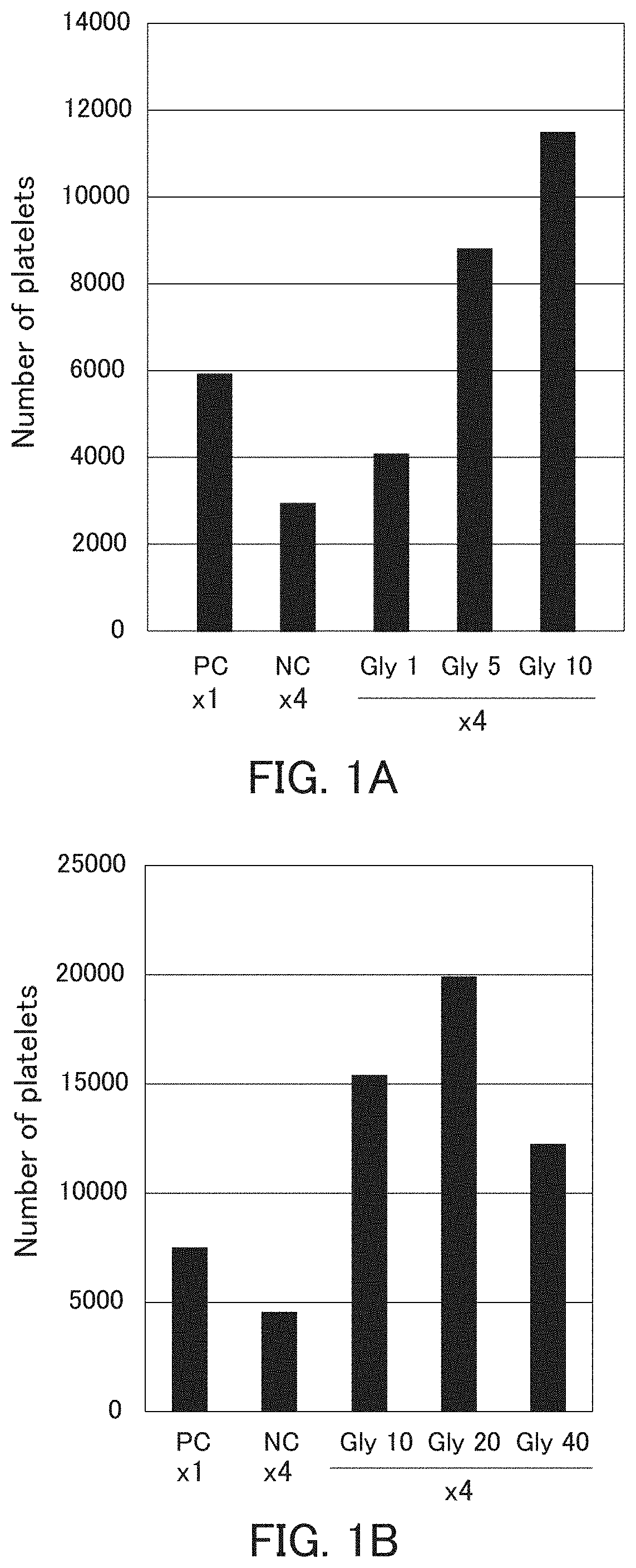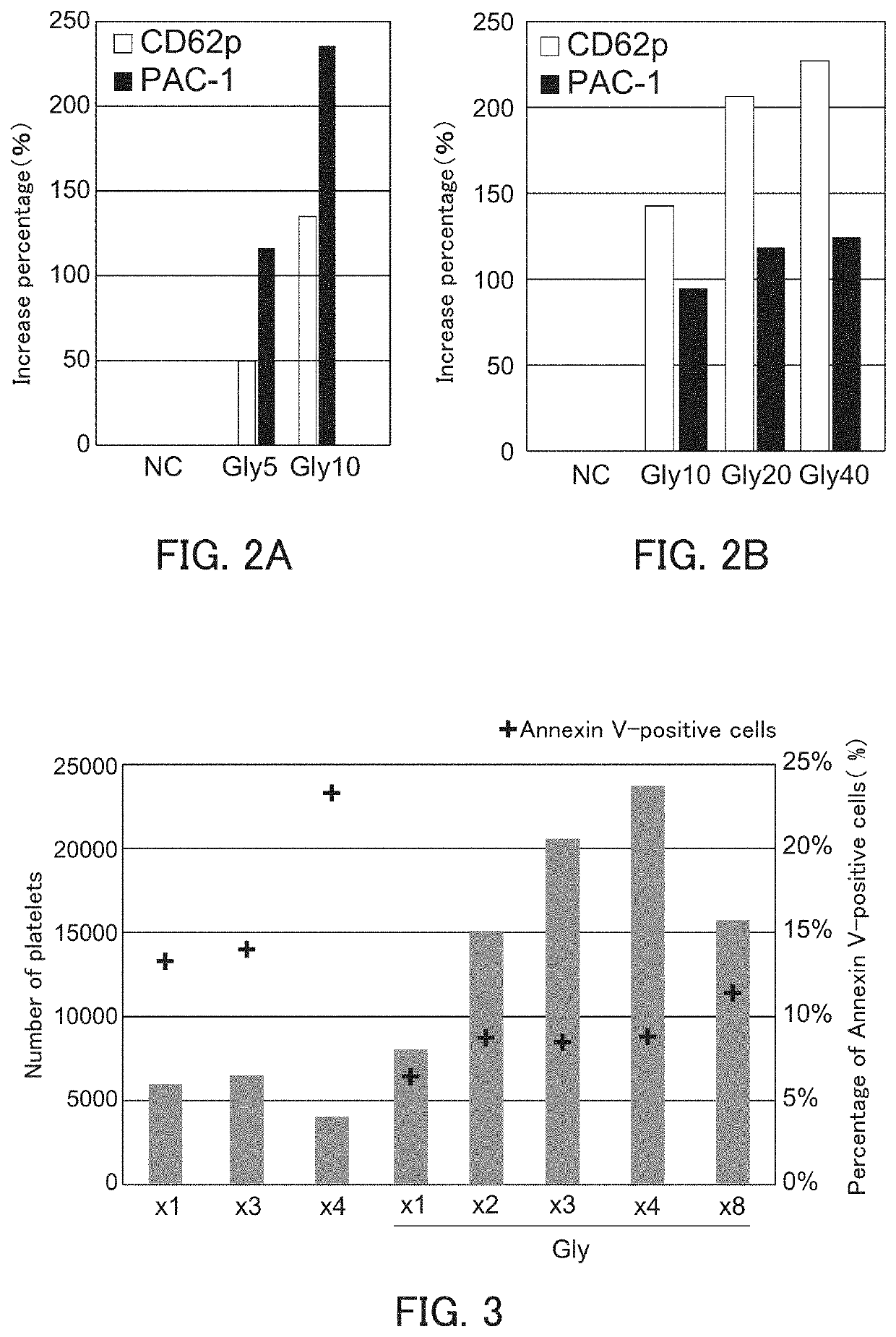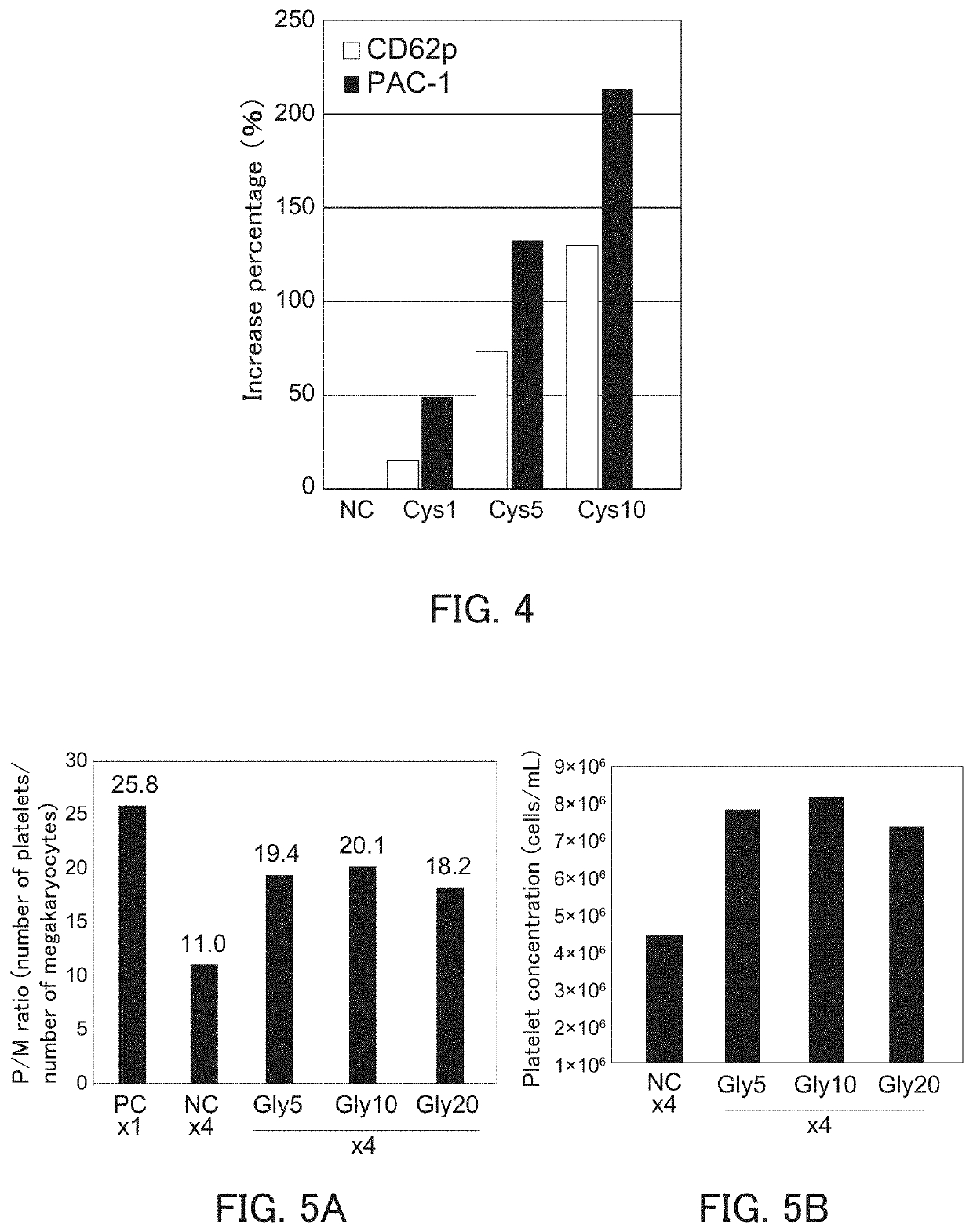Method for producing platelets, method for producing platelet product, and method for producing blood product
a technology of platelet and product, which is applied in the direction of drug composition, extracellular fluid disorder, genetically modified cells, etc., can solve the problems of shortage of platelet products, increased risk of infectious diseases, and decreased blood donation
- Summary
- Abstract
- Description
- Claims
- Application Information
AI Technical Summary
Benefits of technology
Problems solved by technology
Method used
Image
Examples
example 1
[0098]The ability of megakaryocyte to produce platelets and the bioactivity of platelets produced are decreased in the high-density culture, and the ability of megakaryocyte to produce platelets and the bioactivity of platelets produced can be improved by performing the high-density culture in the presence of glycine.
[0099](1) Production of Immortalized Megakaryocytes
[0100]Immortalized megakaryocytes were produced as follows.
[0101](1-1) Preparation of Hematopoietic Progenitors from iPS Cells
[0102]Differentiation culturing was performed to differentiate human iPS cells (TKDN SeV2: human fetal skin fibroblasts-derived iPS cells generated using Sendai virus) to blood cells, using the method described in Reference Document 5 below. Specifically, a human ES / iPS cell colony was co-cultured with C3H10T1 / 2 feeder cells in the presence of 20 ng / mL of VEGF (manufactured by R&D Systems) for 14 days, so that hematopoietic progenitors (Hematopoietic Progenitor Cells; HPC) were produced. The cult...
example 2
[0161]It was examined that the bioactivity of platelets produced can be improved by performing the high-density culture in the presence of cysteine.
[0162]The increase percentages of MFIs of CD62p and PAC-1 were calculated in the same manner as in Example 1(3) except that platelet was produced using a platelet production medium being added with cysteine at a predetermined concentration (1, 5, or 10 mmol / L) instead of glycine. The platelet production medium contains 0.6 to 0.8 mmol / L cysteine. Therefore, the concentration of the cysteine in the platelet production medium after being added with cysteine are about 2 to about 11 mmol / L. As a control, the increase percentage of MFIs of CD62p and PAC-1 was calculated in the same manner except that no cysteine was added. The results thereof are shown in FIG. 4.
[0163]FIG. 4 is a graph showing the increase percentage of MFIs of CD62p and PAC-1. In FIG. 4, the horizontal axis indicates the condition of cell dissemination density and cysteine c...
example 3
[0164]The decrease in the ability of megakaryocyte derived from different pluripotent cells to produce platelets in the high-density culture and the improvement in the ability of megakaryocyte to produce platelets by performing the high-density culture in the presence of glycine were examined.
[0165](1) iPS Cells
[0166]iPS cells were induced by introducing c-MYC, OCT3 / 4, SOX2, and KLF4 into immortalized megakaryocyte cell line (SeV2-MKCL) obtained in Example 1(1-6) by the Sendai virus vector according to the method described in WO 2010 / 134526. Next, immortalized megakaryocyte cell lines were induced in the same manner as in Examples 1(1-1) to (1-6) except that the induced iPS cells were used instead of the human iPS cells (TKDN SeV2). Further, as to the obtained immortalized megakaryocyte cell line, the number of platelets was counted and the platelet concentration was calculated in the same manner as in Example 1(2). Then, the P / M ratio was calculated based on the megakaryocyte cell ...
PUM
| Property | Measurement | Unit |
|---|---|---|
| concentration | aaaaa | aaaaa |
| concentration | aaaaa | aaaaa |
| concentration | aaaaa | aaaaa |
Abstract
Description
Claims
Application Information
 Login to View More
Login to View More - R&D
- Intellectual Property
- Life Sciences
- Materials
- Tech Scout
- Unparalleled Data Quality
- Higher Quality Content
- 60% Fewer Hallucinations
Browse by: Latest US Patents, China's latest patents, Technical Efficacy Thesaurus, Application Domain, Technology Topic, Popular Technical Reports.
© 2025 PatSnap. All rights reserved.Legal|Privacy policy|Modern Slavery Act Transparency Statement|Sitemap|About US| Contact US: help@patsnap.com



